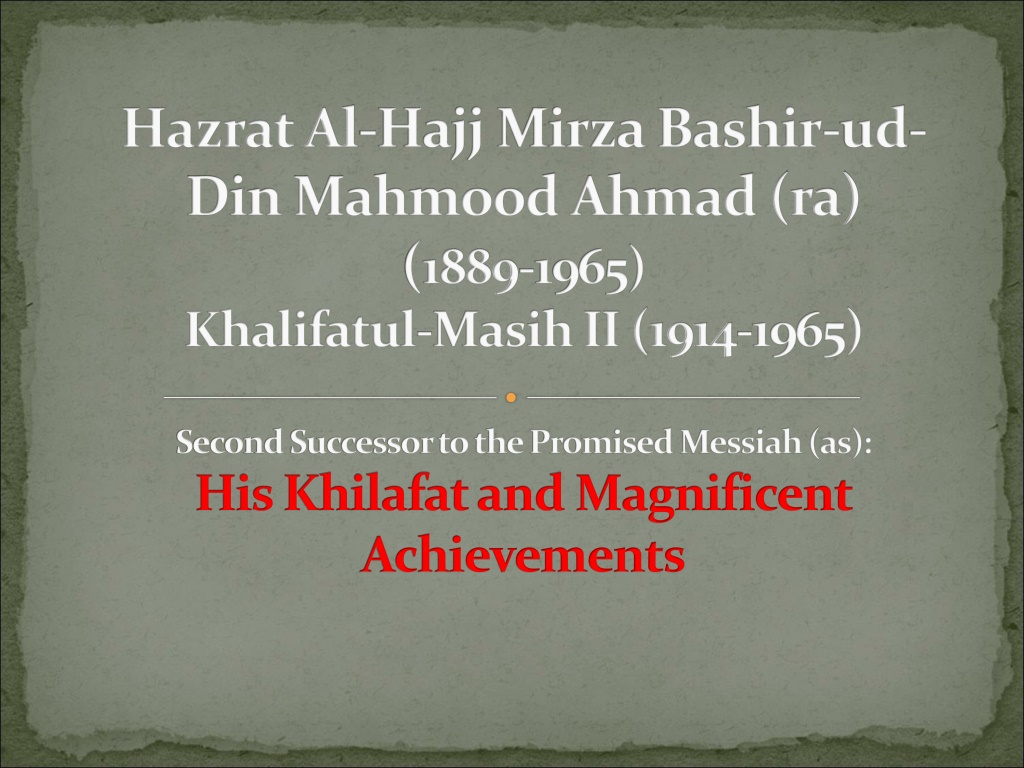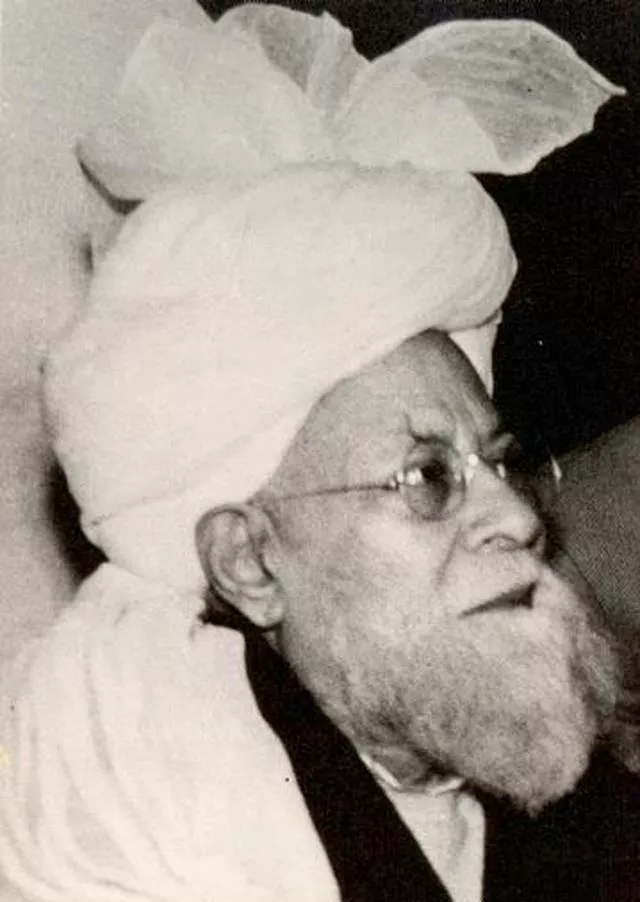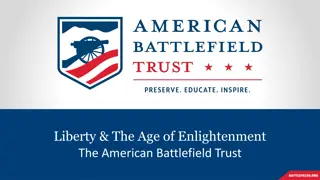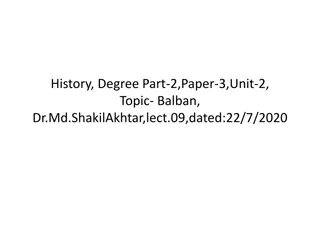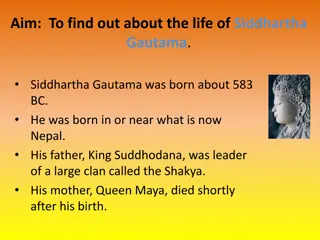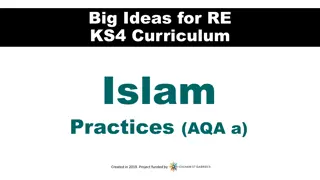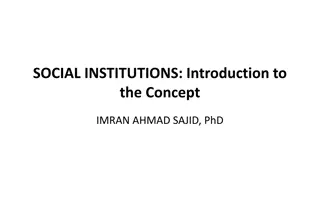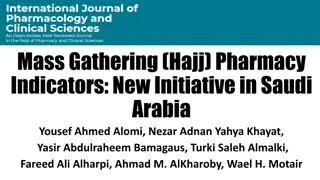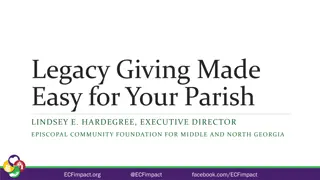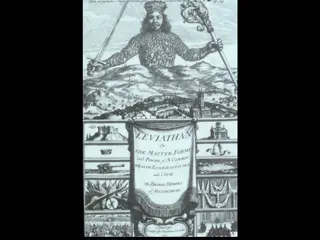Hazrat Al-Hajj Mirza Bashir-ud-Din Mahmood Ahmad (ra) - Khalifatul-Masih II: A Legacy of Service and Enlightenment
Hazrat Al-Hajj Mirza Bashir-ud-Din Mahmood Ahmad (ra), the Second Successor to the Promised Messiah (as), dedicated his life to serving the Jama'at and propagating the teachings of Islam. Through his initiatives like Anjuman Tashheezul Azhaan and Al-Fazl newspaper, he focused on religious education and outreach. Under his Khilafat, he established institutions like Majlis-e-Shura and Nazarat Dawat-o-Tabligh, transforming Madrassa Ahmadiyya into a University. His expertise in Quranic wisdom led to translations in multiple languages, making the Holy Quran accessible worldwide.
Download Presentation

Please find below an Image/Link to download the presentation.
The content on the website is provided AS IS for your information and personal use only. It may not be sold, licensed, or shared on other websites without obtaining consent from the author. Download presentation by click this link. If you encounter any issues during the download, it is possible that the publisher has removed the file from their server.
E N D
Presentation Transcript
Hazrat Al-Hajj Mirza Bashir-ud- Din Mahmood Ahmad (ra) (1889-1965) Khalifatul-Masih II (1914-1965) Second Successor to the Promised Messiah (as): His Khilafat and Magnificent Achievements
At the age of 19, Sahibzada Mirza Bashiruddin Mahmood Ahmad (ra) offered himself for the Waqf (dedicated his life to serve the Jama at) and soon formed Anjuman Tashheezul Azhaan (Organization for the sharpening of intellect) and under its supervision, started a magazine of the same name, through which the work of religious education for children was carried out. Early in 1911, with the permission of Hazrat Hakeem Nooruddin, Khalifatul-Masih I (ra), founded the Anjuman Ansarullah (Organization of Helpers of Allah) to propagate the teachings of Islam.
In June 1913, he started "The Al-Fazl" a newspaper for the Jama at which, in addition to the news, published informative, educational, historical, propagational, and reformatory articles.
In 1914, as Khalifatul-Masih II (ra), he established Majlis-e-Shura to discuss the propagation of Islam. To facilitate this, Huzoor (ra) created the Nazarat DawatoTabligh (Executive Office of Preaching) in 1919, and the Madrassa (School) Ahmadiyya as the center. His untiring efforts for its advancement steered it from the status of a mere school to a University. These efforts were aimed at training learned religious missionaries.
The wisdom of the Holy Qur an, provided in Huzoor s (ra) Tafsir-e-Kabir (Greater (long) Commentary) bears undeniable evidence of his God-given knowledge of the Holy Qur an. The Holy Qur an was translated into various languages so that the glory and wisdom of the Divine Book could be made available to people who did not read/understand Arabic.
In order to consolidate and organize the Jamaat Huzoor (ra) established the Central and Regional Anjuman (Organizations) as well as various important Nazarat (Executive Offices) under the Sadr Anjuman Ahmadiyya Qadian to facilitate all efforts: Nazarat DawatoTabligh (Executive Office of Propagation) Nazarat Taleem (Executive Office of Education) Nazarat Umoor-e-Aamma (Executive Office of General Affairs) Nazarat Bait-ul-Mal (Executive Office of Finance) and Nazarat Aa la (Executive Office of Guardians) this office oversees all other executive offices
Huzoor (ra) formed auxiliary organizations in the Jama at to serve the needs of both genders according to different age groups: In 1922: Majlis Lajna Ima Illah for women. In 1928: Majlis Nasirat-ul-Ahmadiyya for girls ages 7-15 In 1938: Majlis Khuddam-ul-Ahmadiyya for men ages 15-40. In 1938: Majlis Atfal-ul-Ahmadiyya for boys ages 7- 15. In 1940: Majlis Ansarullah for men age 40 and above.
Hazrat Musleh Mauud (ra) planned, re-organized, and consolidated the financial structure of the Jama at. He put forth various initiatives and appeals for donations and contributions. Some of these are: An appeal for financial donations for Anjuman Taraqqi-e-Islam (Organization for the promotion of Islam) in order to send his missionaries to all the cities and towns of India for the preaching of Islam. The initiative for the completion of Minaratul Masih. Call to women to collect funds for preaching Call to donate for the London Mosque.
Through the important initiative of Tahrik- e-Jadid in 1934, many Ahmadiyya Muslim Missions were established the world over. Similarly, the initiative of Waqf-e-Jadid came about in order to promote missionary and reformative activities of the Jama at in every city, town, and village in India and Pakistan by appointing teachers everywhere for rural communities. This initiative was introduced on September 27, 1957.
Hazrat Khalifatul-Masih II (ra) laid the foundation stone of Fazl-e-Umar hospital in Rabwah, Pakistan, in 1958
This is only a very brief glimpse of some of the magnificent achievements of Hazrat Musleh Mau ud (ra). All members are encouraged to read and research more about his life and service to Islam Ahmadiyyat. May Allah help us all to aspire to and to implement the expectations of this great leader, Amin.
